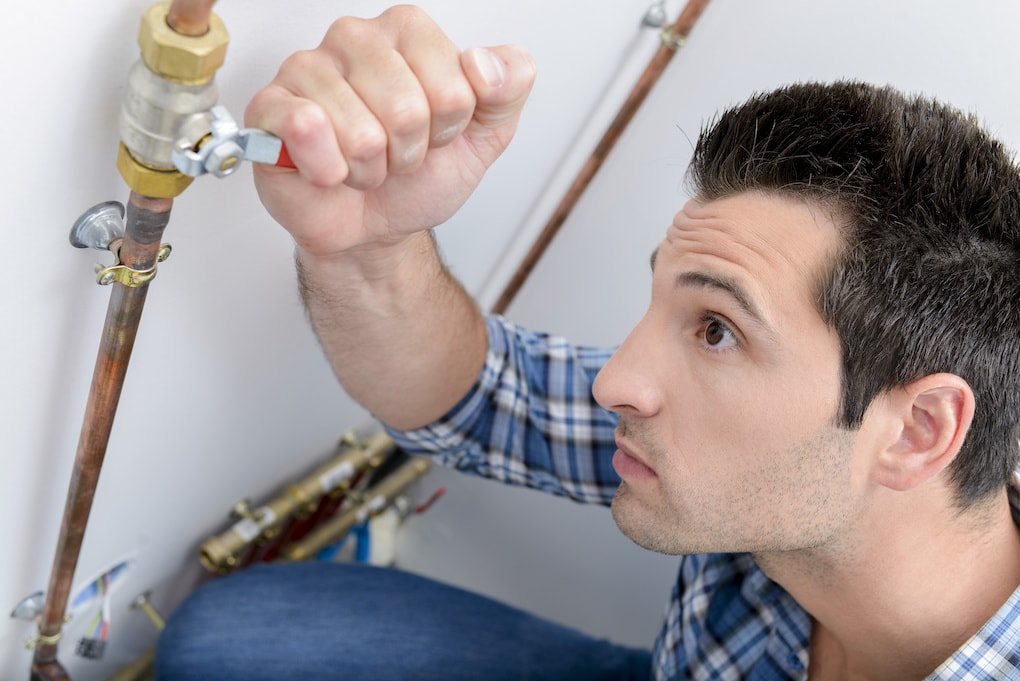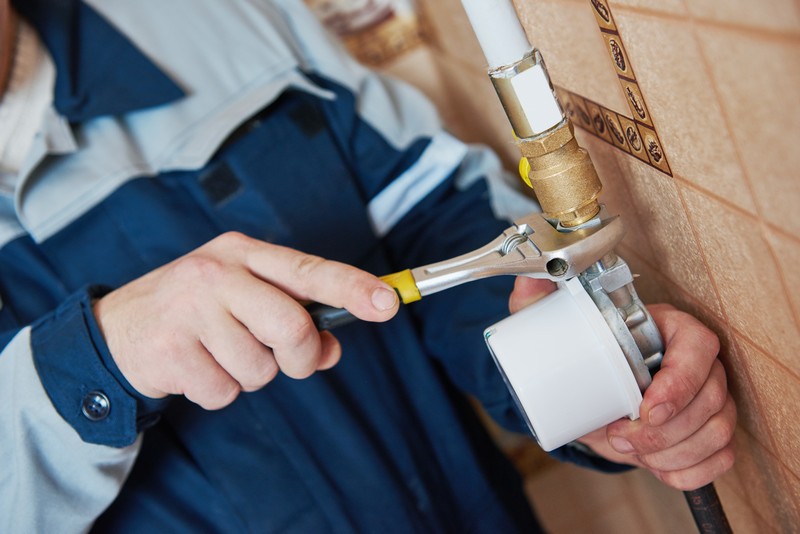Everyone has their own unique opinion about The Future Of Plumbing: Trends And Technologies To Watch.

Introduction
The plumbing sector is undertaking a transformative phase driven by technical advancements and growing issues for sustainability and performance. This post checks out emerging fads and innovations shaping the future of pipes.
Smart Plumbing Systems
Incorporating clever innovation into plumbing systems allows remote tracking, leak detection, and automated maintenance. Smart sensing units and IoT (Internet of Points) devices permit homeowners and plumbing professionals to keep an eye on water usage and spot problems in real-time, leading to more efficient source monitoring and aggressive maintenance.
Water Effectiveness Solutions
With boosting emphasis on water preservation, ingenious remedies are being established to decrease water waste in plumbing systems. High-efficiency components, greywater recycling systems, and smart irrigation controllers are among the technologies assisting consumers minimize their water impact while maintaining comfort and ease.
Lasting Products
The shift towards sustainability encompasses pipes materials, with an expanding preference for environmentally friendly choices. Naturally degradable piping products, such as PEX (cross-linked polyethylene) and HDPE (high-density polyethylene), offer longevity and resistance to corrosion without jeopardizing environmental stability.
Anticipating Maintenance
Anticipating upkeep methods utilize data analytics and artificial intelligence formulas to anticipate and avoid pipes concerns before they happen. By examining historic information and efficiency metrics, predictive maintenance algorithms can recognize patterns and anomalies, allowing positive treatments to stay clear of pricey repairs and disruptions.
Augmented Reality in Pipes
Increased Fact (AR) modern technology is revolutionizing pipes by giving technicians with real-time visual assistance for troubleshooting and repair tasks. AR-enabled clever glasses or mobile applications overlay digital information onto the physical setting, aiding plumbing professionals imagine pipe formats, recognize surprise leaks, and execute fixings with accuracy.
Influence of 3D Printing
The development of 3D printing has presented brand-new possibilities in manufacturing plumbing elements. From custom-made components to intricate pipe fittings, 3D printing enables quick prototyping and on-demand manufacturing, reducing lead times and enabling greater customization in plumbing layout.
Health And Wellness Qualities
In feedback to enhanced problems for health and wellness, plumbing fixtures are incorporating attributes such as antimicrobial surface areas, touchless operation, and self-cleaning devices. These technologies not only enhance health but additionally advertise user convenience and benefit.
Hygiene-focused Components
Touchless faucets, self-sanitizing commodes, and antimicrobial surfaces are coming to be progressively widespread in property and business settings, decreasing the danger of germ transmission and promoting a cleaner, much healthier atmosphere.
Water High Quality Tracking
Advancements in water quality surveillance technologies allow property owners to keep track of the pureness and safety and security of their water system in real-time. Smart water high quality sensors can identify contaminants, pH levels, and temperature variations, encouraging users to take proactive procedures to ensure water safety.
Remote Plumbing Services
Remote diagnostics and online support are transforming the way plumbing services are delivered. Through video clip conferencing and remote gain access to innovations, plumbing technicians can fix issues, provide advice for DIY fixings, and also perform remote examinations, providing better availability and ease to house owners.
Obstacles and Opportunities
While plumbing innovations hold tremendous pledge, they also existing obstacles such as data personal privacy worries, regulative conformity, and the requirement for workforce training. Addressing these obstacles requires cooperation between sector stakeholders and regulative bodies to make certain safe and liable implementation of new modern technologies.
Regulatory Landscape
Regulative structures play an essential function fit the fostering of plumbing developments, with requirements and codes controling everything from water performance to product safety. As innovations continue to evolve, regulative bodies should adapt to guarantee consumer defense and ecological stewardship.
Future Overview
The future of plumbing is identified by proceeded advancement and combination with various other sectors such as IoT, renewable energy, and structure automation. By accepting lasting practices, leveraging emerging modern technologies, and prioritizing user-centric style, the pipes industry is poised to resolve the developing requirements of society while reducing its environmental impact.
Conclusion
In conclusion, the future of plumbing is defined by a convergence of innovation, sustainability, and user-centric design. By embracing wise options, lasting materials, and positive maintenance practices, the plumbing market can improve effectiveness, advertise safety and security, and contribute to an extra sustainable future.
Plumbing Technology Trends 2024: Shaping a Sustainable and Efficient Future
Plumbing Technology: A Beacon of Innovation
Intelligent Plumbing Systems: The adoption of smart plumbing solutions offers unparalleled control over water usage, preventing waste and ensuring optimal efficiency. These systems can be installed by qualified contractors and may require technicians with expertise in new codes for proper functionality. Eco-Friendly Piping: Innovations in piping materials, like PEX and recycled content options, are making plumbing systems more sustainable. These materials are not only better for the environment but also durable and flexible, making them easier to install and less likely to need repairs. Automated Leak Detection: New plumbing technologies include systems that can automatically detect leaks. This is a big deal because it means we can fix them before they cause a lot of damage or waste too much water. It’s all about catching problems early and saving resources. Energy-Efficient Water Heaters: There’s also a big push towards devices that use less energy. This includes solar and tankless models, which provide hot water only when it’s needed, cutting down on energy use and costs. Plumbers: Champions of Sustainability
Adopting Green Practices: Contractors who specialize in sustainable plumbing can ensure your system meets the latest regulations and utilizes efficient valves. They undergo comprehensive training programs that emphasize sustainability in practices like eco-friendly installations. Water Conservation Efforts: Through the installation of high-efficiency appliances, plumbers are essential in reducing water consumption and promoting conservation. When repairing or replacing older fixtures, plumbers can recommend high-efficiency options that comply with local codes. Pipe: The Lifeline of Modern Plumbing
Innovative Pipe Solutions: The use of environmentally friendly and durable materials in pipes, like PEX and recycled content options, reduces the ecological footprint and enhances water quality. These innovative pipe solutions may require specialized repair techniques from qualified plumbers familiar with the materials. Advanced Leak Detection: Modern pipes are now more frequently equipped with sensor technology that can identify leaks early, conserving water and preventing damage. Early leak detection can save homeowners money on repair costs and potential water damage. Water Heater: At the Forefront of Efficiency
Renewable Energy Heaters: Solar heaters and other renewable energy-powered models are becoming more common, offering an eco-friendly alternative to traditional methods. These benefit the environment but can also potentially lead to lower water bills through reduced energy use. On-Demand Heating: Tankless heaters have gained popularity for their ability to provide hot water as needed, minimizing energy waste. This innovative technology eliminates the need for a large storage tank, freeing up valuable space and simplifying the installation process for qualified plumbers. https://intownplumbingtx.com/articles/plumbing-technology-trends/

Do you really like reading about 7 Plumbing Industry Trends You Need To Know? Give a comment down the page. We'd be happy to hear your feelings about this blog post. We are looking forward to see you back again later on. Loved our piece of writing? Please share it. Help others discover it. Kudos for being here. Return soon.
This Website